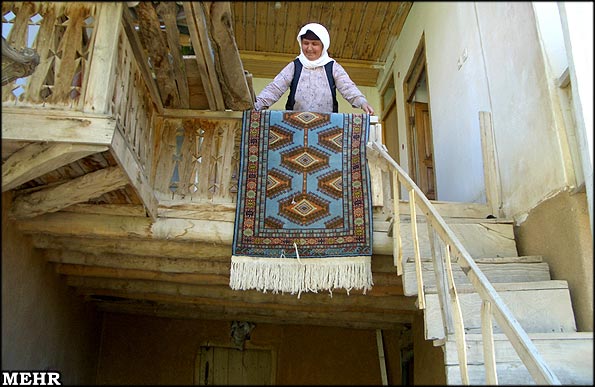- English
- فارسی
Planning in Rural Development
Course Description and Objectives:
Instructor: Dr. Ali Yousefi
Level: Graduate
IUT Couse Number: 36-18-617
Taught in: Spring
Web Course URL: http://ivut.iut.ac.ir/login.php?course=299 (Restricted Access)
In developing countries, rural planning is expected to achieve an eclectic mixture of goals. The more pragmatic ones include effective delivery of public services such as schooling and health care, and the efficient provision of infrastructure for water supply and sanitation, access, communications and electricity. More complex goals include the sustainable use and management of the natural resources that underpin rural livelihoods, and encouragement and support for local enterprises that can broaden the base of the economy, for instance, by provision of facilities and credit. Intangible goals include poverty alleviation, equity and empowerment of local people through participation in the planning process itself.
This course provides a lucid explanation of the main techniques used for development policy formulation in developing countries, and discusses their application.
Economic Development
|
ACTIVITIES |
PERCENTAGES |
|---|---|
|
Project |
30% |
|
Final Exam |
70% |
Lectures: 2 sessions / week
Sunday 8-10 AM (Class 11)
Monday 13:30-14:30 PM (Class 14)
Syllabus and Reading:
|
TOPICS |
READING |
||
|---|---|---|---|
|
I. INTRODUCTION |
|||
|
1 |
An Introduction to Planning |
صرافي، مظفر (1379). مباني برنامه ريزي توسعه منطقهاي، انتشارات سازمان مديريت و برنامهريزي كشور. |
|
|
2 |
The Processes of Planning |
||
|
3 |
The Types of Planning |
||
|
4 |
The Structure of Planning |
||
|
II. PROGRAMMING APPROACH TO PLANNING |
|||
|
5 |
An Introduction to Mathematical Programming |
فصل 2، 3 و 7 از سلطانی غلامرضا، زیبایی منصور و کهخا احمد علی (1378). کاربرد برنامه ریزی ریاضی در کشاورزی، انتشارات سازمان تحقیقات آموزش و کشاورزی.
|
|
|
6 |
A Simple Linear Programming Problem: a Graphic Solution |
||
|
7 |
Linear Programming: Simplex Method Example |
||
|
8 |
Sensitivity Analysis |
||
|
9 |
Shadow Pricing of Resources |
||
|
10 |
Assumption of Linear Programming |
||
|
11 |
Computational Difficulties in Liner programming |
||
|
12 |
An Introduction to Lindo and GAMS Software |
LINDO User Manuals (FREE ACCESS) A GAMS Tutorial (FREE ACCESS) GAMS - A User's Guide (FREE ACCESS) |
|
|
III. MULTIPLE CRITERIA ANALYSIS FOR DECISIONS MAKING |
|||
|
13 |
An Introduction to Multi-criteria Decision Making |
|
|
|
14 |
Multi-Objective Decision Making: Goal Programing |
||
|
15 |
Goal Programing: Lexicographic and Weighted Methods |
||
|
16 |
Multi-Attribute Decision Making: Analytical Hierarchy Process (AHP) |
||
|
17 |
An Introduction to Expert Choice Software |
Desktop-based Expert Choice Software (FREE ACCESS) |
|
|
IV. REGIONAL AND INTERREGIONAL INPUT-OUTPUT ANALYSIS |
|||
|
18 |
The Statistical Framework: Input Output Accounts |
|
|
|
19 |
Input-Output: a Sketch of the System |
||
|
20 |
Technical Coefficient and Input-Output Analysis |
||
|
21 |
Policy Applications of Input-Output Analysis |
||
|
22 |
Rational Analysis in the Field |
||
|
V. MULTI-SECTORAL MODELS AND THE SOCIAL ACCOUNTING MATRIX |
|||
|
23 |
The Overall Conceptual Framework |
Pyatt, G., & Roe, A. (1978). Social accounting for development planning: Cambridge University Press. (FREE ACCESS) |
|
|
24 |
Classification and Disaggregation of Accounts |
||
|
25 |
Data Requirement in the construction of a Social Accounting Matrix |
||
|
26 |
Social Accounting Matrix multiplier Analysis |
||
|
VI. LOCATIONAL ANALYSIS |
|||
|
27 |
Agglomeration and Location |
Chapter 1-3 in Capello, R. (2007). Regional economics. London and New York.
|
|
|
28 |
Accessibility and Location |
||
|
29 |
Hierarchy and Location |
||

